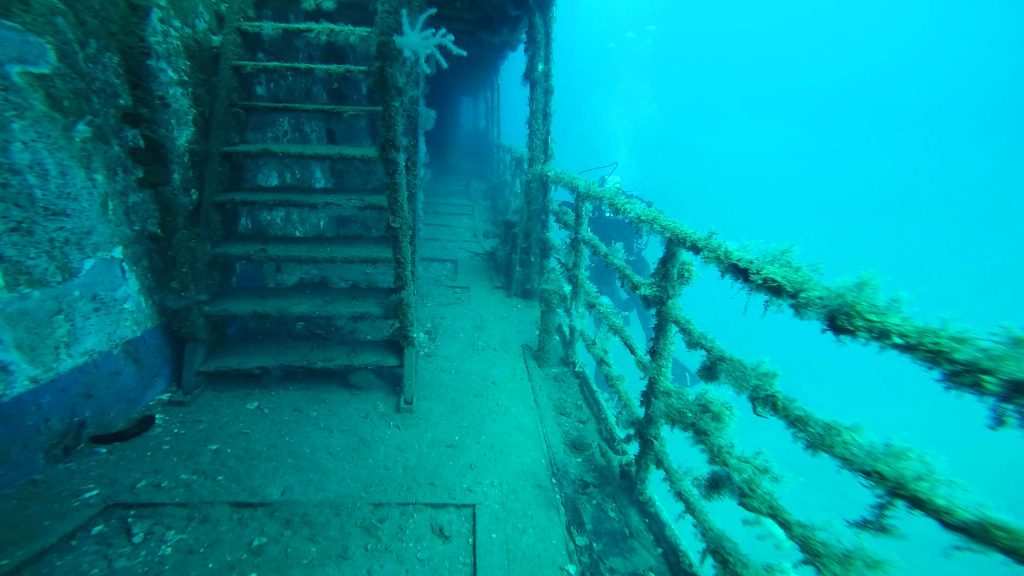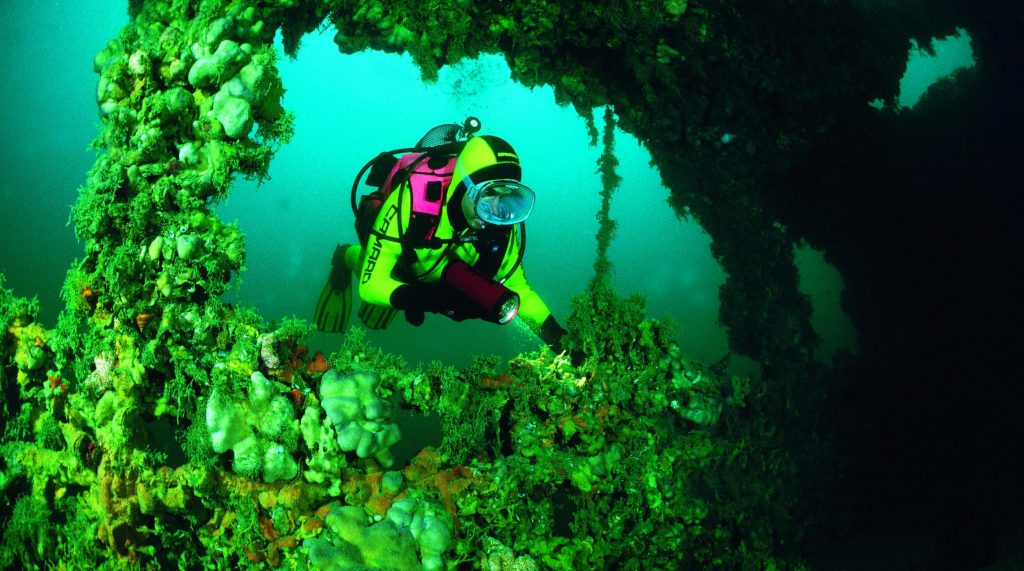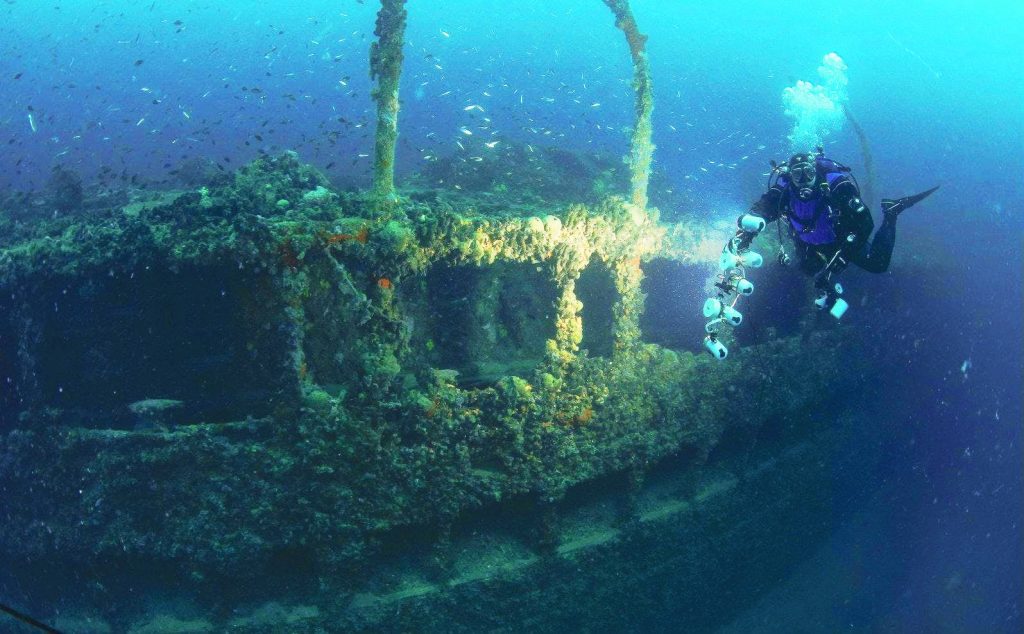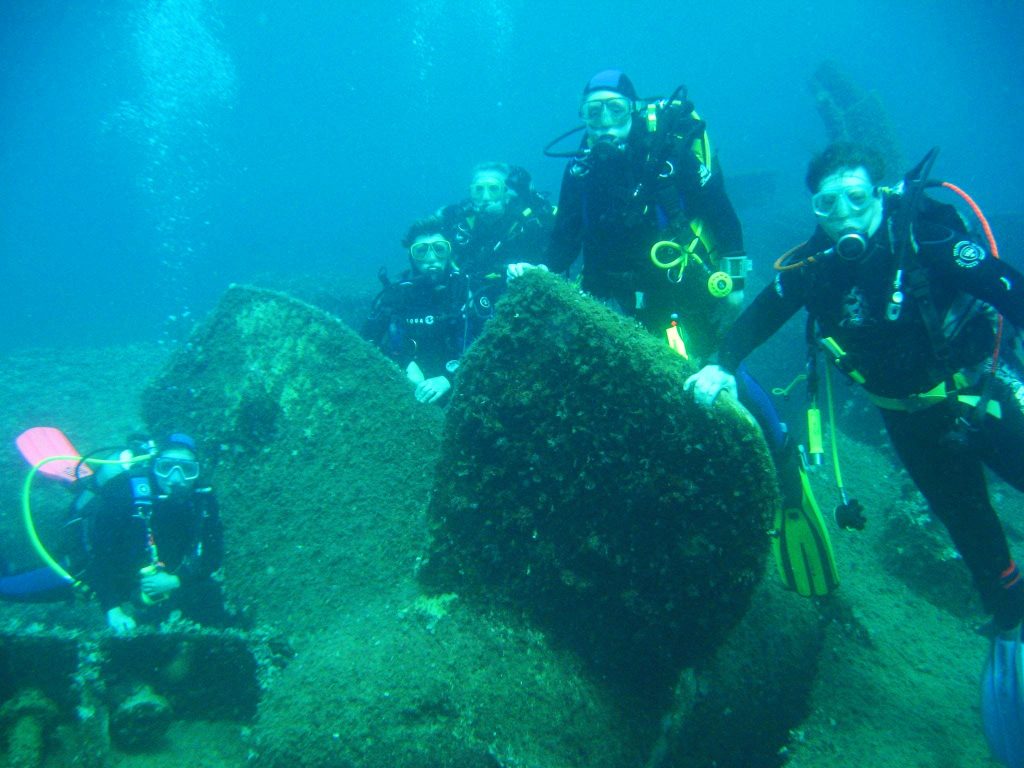Wreck diving in Croatia is a fascinating sport that allows you to combine your passion for scuba diving with the history of the country. Croatia is one of the best places in Europe to practice scuba diving. Its indented coastline with 1185 islands allows for an invaluable variety of underwater landscapes.
Croatia is also the perfect place to discover beautiful wrecks. The areas with the highest concentration of wrecks are around the region of Istria and the island of Vis in the Split-Dalmatia region. In this article, I will show you the most interesting shipwrecks in the Adriatic Sea to visit region by region. Further, I will present other unique wrecks such as submarines, airplanes and other underwater attractions that are accessible even for absolute beginners: the so-called underwater museums.
On the map, the icons correspond to the wrecks I will mention in this article. By clicking on the different icons, you will be able to see the name of the wreck, the region where it is located, the depth at which it lies, the year it was sunk, the size of the wreck and, in some cases, links to the offer to visit the attraction with one of our trusted providers.
Shipwreck diving in Croatia:

Shipwrecks are undoubtedly the most common type of wreck you will come across when wreck diving, but by no means is it a repetitive activity. In fact, in Croatia, you can find boats of different eras, ranging from a 2000-year-old Roman shipwreck, to those sunk during World War II. Each boat has a different size and degree of preservation. Some are broken in two sections, such as the boat Caesar Rossarol or the Hans Schmidt. Others have coral formations on them, such as the ship Michelle. Some of the ships were warships, while others were cargo ships.
Below I will explain which are the most intriguing wrecks depending on the region you are staying in.
Shipwreck diving in Istria

Although it is very difficult to narrow down the most beautiful wrecks in Istria, I’ve listed below five wrecks that, without doubt, deserve to be seen. These ships all sank between World War I and World War II. Indeed, while the Adriatic Sea was very important for trade, even in ancient times, the sea around the Istrian peninsula was littered with mines and was the scene of some major battles during these wars.
- Coriolanus: This ship, a British minesweeper, sank after a mine detonated on May 5, 1945 off the coast of Novigrad. The ship, which is now home to a wonderful marine flora and fauna, is full of sponges and fish. The wreck is located at a minimum depth of 17 m (ship bridge) and maximum depth of 29 m below sea level. What’s particularly interesting are the cannons that are still clearly visible to divers.
- Giuseppe Dezza (TA-35): This ship, an Italian minesweeper, renamed to TA-35 by the German Army, was sunk by a British aircraft and broke in two in 1944, about 10 km south of Rovinj. The ship is now at a depth of 32-37 m. An important feature of this wreck that attracts many curious divers is the possibility to admire the cannons and military equipment.

- Baron Gautsch: The Austro-Hungarian civilian passenger vessel sunk on August 13, 1914 on its way from Kotor to Trieste because of a KGB mine. Despite the rapid intervention of 3 ships, more than half the passengers died in the accident. The captain and the officer who survived were arrested and accused, among other things, of not having followed the route established by the navy and of not having reacted to warnings of danger once they had entered the minefield. Afterward, authorities conducted investigations into the incident. Each year on the anniversary of the disaster, a ceremony is held in memory of the victims. The boat now lies at a depth of 28-39 m and has many entry points allowing interested divers to admire its interior.
- Hans Schmidt: This ship full of armour sank and broke into two parts on January 23, 1943 off the coast of Pula. The ship Hans Schmidt, also known as Constantinos or Istra, is located at a depth of 28-42m. The Munitions can be easily seen when on a wreck diving excursion.
- Cesare Rossarol (Cez 1, Cez 2): This ship, an Italian destroyer, sank on the 16th of November 1918 on the south-eastern coast of Istria and broke into two parts. The most probable cause of the incident was, again, a mine. The explosion was very strong and the ship sank very quickly. Only 10% of the crew survived. The ship now lies at a depth of 40-50 meters. Its two parts are located particularly far from each other, more than 300 meters apart. During the dive it is possible to see a cannon and a machine gun still clearly visible, even if they are covered with algae and sponges.
If you are interested in wreck diving in Istria, do not miss our article: Wreck diving in Istria
Shipwreck diving in Zadar County

One of the most interesting wreck dives in Croatia is the one you can do on the island of Pag. The charm of this dive site is the antiquity of the objects found here (I century BC), which were discovered just a few years ago, in May 2018, by Vedran Dorušić, the director of Foka Diving Centar Šimuni. A little further south, on the island of Dugi Otok, there is another wreck, much less ancient but just as interesting. The reason why this wreck called Michelle is a popular destination for diving excursions, is the fact that part of it emerges from the sea, thereby making it suitable for snorkeling too.
- Letavica (Straon): The wreck dates back to the first century BC. Underwater, you can admire a lot of amphorae from the Roman era sunk together with a vessel estimated to be about 25-30 m in length, and of which now no trace remains. The amphorae, which are in a single block of 23 m and are covered by marine vegetation, are of many different types. Several meters away, you can admire a part of the anchor that probably belonged to the Roman ship.
- Michelle (S. Michele): Sunk in 1983, this ship is now covered in corals and frequented by different types of fish. Although it is partially emerged and therefore easy to find and observe even while snorkeling, it is important not to underestimate the difficulty of diving at this wreck. In fact, the currents can be very strong, which is why it is recommended to only go diving here when accompanied by an expert guide.
Shipwreck diving in Split-Dalmatia
In the region of Split Dalmatia, you will find what is perhaps the most coveted island in the Adriatic Sea – the island of Vis. Several battles were fought to gain control of the island, which is why many wrecks can be found off its coast. Three historically interesting wrecks are Re d’Italia, Vassillios and Brijuni, as well as the B-24 airplane which I will discuss later.
- Re d’Italia: Although this wreck can only be approached by highly experienced divers, the ship has such an interesting history that it deserves to be mentioned in this article. The ship, an Italian military vessel, was on a mission to conquer the island of Vis during the Third Italian War of Independence and was sunk on July 19, 1866 after being rammed by the Austrian Erzherzog Ferdinand Max. It is believed that this event, in which only 29% of the crew survived, strongly influenced the fate of the First World War. After years searching for it and many myths being told about this wreck, the ship was finally discovered in 2003 at a depth of 100 m.
- Brijuni (Brioni): This ship, originally built for passenger transportation and later used as a military vessel, was involved in two major accidents. The first occurred in 1917 near the island of Krk, where it ran aground for the first time. The ship stopped sailing for good on 2 February 1930 when she ran aground for a second time and sank off the island of Ravnik. The wreck is preserved in excellent condition and is suitable for experienced divers.
- Vassilios: This Greek ship sank in 1939 and is one of the largest wrecks in the Adriatic Sea (104m). As such, it is very popular among diving enthusiasts. The wreck can be explored by advanced-intermediate divers.
Shipwreck diving in Dubrovnik-Neretva

The islands of Korcula and Grebeni in the Dubrovnik-Neretva region are perfect for wreck diving. While in Korcula, even the most inexperienced divers can try their first wreck dive, in Grebeni two tractors await the most experienced divers for an unusual adventure.
- Boca: The Boca sank after slamming into the shore, which is why it is located in shallow waters, excellent for divers of intermediate level who wish to admire this fascinating wreck. Some of its most striking characteristics are its propellers, as you can see in the picture.
- Garda: is a steamship that lies at a depth of 23m. The sandy bottom has contributed to the development of a peculiar marine fauna.
- Taranto: This steamer belonged to the Italian Navy and sank on the 15th of February 1943 because of a mine. What makes this wreck so interesting, more so than its history, is some of the cargo it lost. In fact, the boat was carrying flour and two tractors when it sank. The tractors are visible a short distance from the wreck, a unique opportunity to see something unusual under the sea.
Submarine wreck diving in Croatia
In addition to the numerous ships, you can also see the remnants of some submarines in Croatia. One example is the German submarine UB-129 that sank near the coast of Rijeka on 31 October 1918. Even more interesting is the submarine U-82.
- U-82: The German submarine was voluntarily sunk by the German Army at the end of World War II to preserve military secrets. When diving, you can admire various bombs and other military ammunition.
Plane wreck diving in Croatia
If you want to see something more exciting and atypical, diving to an airplane wreck is definitely an activity to try in Croatia. Along the coasts of the island of Vis, and in the Adriatic Sea in general, lie several airplane wrecks, the most famous being the B-24. However, there is another spectacular airplane just off the island of Zirje that can be admired at a depth of only 28 meters.
- B-24: The discovery of this bomber plane occurred in 2009. The Italian plane sank in 1944 due to a German attack over the skies of the Czech Republic. The plane headed towards the island of Vis to land but the damage it sustained did not allow it to land on the mainland. The engines stopped suddenly and the plane crashed into the sea. Out of the crew of 10 people, 7 were saved. These days, it is sometimes possible to visit the plane when the currents allow it.
- Junkers Ju 87: This is an Italian Sturzkampfbomber that sank off the island of Zirje due to an attack by Yugoslav ships on the 12th of April 1941. It is believed that the crew of two was saved. The interesting thing about this wreck is, in addition to its excellent preservation, the depth at which it is located (28m), which makes it accessible also to divers with limited experience.
Diving in underwater museums in Croatia
Underwater museums offer a fun and quirky approach to this wonderful sport for beginner divers. In an underwater museum, the various statues, cannons or amphorae are placed at a minimal depth, making it a perfect place for a trial dive. You can find more than 10 underwater museums in all of Croatia. These are the two must-see museums:
- Lošinj Historical Underwater Park: This museum consists of 11 stations with replicas of statues, cannons and ancient amphorae located between 5 and 15 meters below sea level. The museum offers a journey through the history of the Croatian region and a fun first scuba diving experience.
- Via Crucis: This museum consists of 52 human-sized statues representing the Stations of the Cross. The statues are located at a perfect depth of 4-12 meters.

Hi David,
Thank you for your interest, I am not familiar with diving using manned submersibles, but I can name some very deep wrecks in Italy and Croatia.
In Puglia, some famous ones are: Alessandro Primo (85-110 m), Città di Catania (120 m) and Nina Bianchi (94-102 m).
In Sicily: Calvino (128-146) and Espresso Trapani (85-107 m).
In Liguria: Da Bardiano (110 m) and Enrichetta (135-160 m).
In Croatia there are two very deep aircraft: B-17 (65-72 m) and B-24h (86-92 m).
Remember to always dive with highly qualified providers.
Have a nice day
Elisa
Hello Elisa, other than the Re dItalia can you advise about other deep shipwrecks in Croatia and Italy for diving using a manned submersible from 100 to 200 metres.